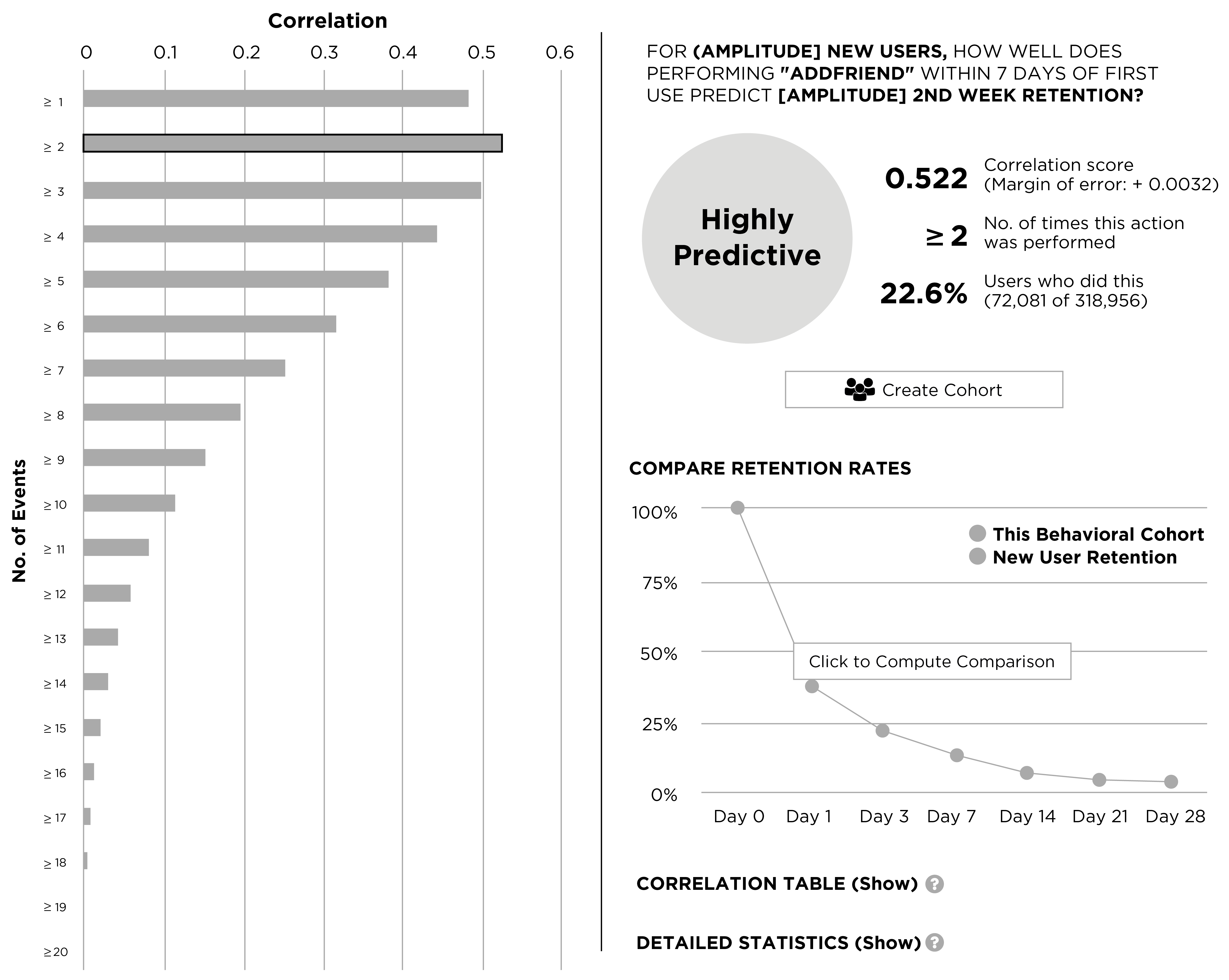“The sooner you help people experience a meaningful quick win in the product, the sooner your users will come back to your product and eventually turn into customers.” – Wes Bush, Author of Product-Led Growth
Once the right users are signing up for the right reasons, you’ve won, right?
Not quite.
There’s a difference between buying into a value proposition, and experiencing the actual value of a product.
Once users sign up, your goal is to establish your product’s value quickly, by getting users to their desired outcomes. Short time to value is the goal.
The faster you can convince them that your product addresses their needs, the faster you’ll create engaged and happy subscribers.
To do that, you need to:
- identify the must-have experience in your product; and
- look for ways to front-load that experience.
This means getting users to the Aha moment as quickly as possible.
Activation, or activation rate, is the metric that is most often associated with a user’s Aha moment. It’s also the metric that has the most influence over conversion and long-term retention.
The better users understand the value of your product, the more likely they are to use it, come to depend on it, and be happy to pay and keep paying for it.
The problem with activation and activation metrics is that, unlike most of the other Pirate Metrics like acquisition, revenue, or referral, your activation metric will be unique to your product. You need to find what drives the Aha moment for your product.
To do this analysis, you have to understand which actions or behaviors are most closely correlated with long-term retention.
Defining Your Product’s Most Valuable Functionalities
This can be done by calculating the correlation coefficient—the strength of the relationship between two variables—between specific actions and retention.
For example:
- Users who stayed engaged more than 6 months AND customized their profile information;
- Users who stayed engaged more than 6 months AND used the product daily; or
- Users who stayed engaged more than 6 months AND live in the United States, etc.
By going through all scenarios, you can identify the behaviors that are most closely correlated with long-term retention.
Analytics tools like Amplitude have built-in functionalities to help get this data quickly:

The same analysis can allow you to uncover which actions are most closely correlated with conversion, referrals, or any other goal.
It can help you map and sequence your Aha moments, to get the right users to the value in your product as quickly as possible.
For example, if your product was a smartphone, your Aha moments might be:
- quick setup;
- calendar and email sync;
- camera quality;
- video content suggestions; and
- easy app management.
Helping new users discover these features in this sequence would help them realize how valuable and essential the smartphone could be for their work, or for their personal life.
This concept is also sometimes called the Minimum Path to Awesome (MPA)—the optimal path to value discovery in your product.
If your product is complicated to use, or if it takes a long time to experience a first win, then you will have a hard time scaling the product in a self-serve mode.
Improving Your Product’s Time to Value (TTV)
So, what action is most correlated with long-term retention? What are the absolute minimum steps required for a user to experience that value? How long is your product’s time to value?
Create a visual diagram where you map out chronologically and sequentially what users need to do in order to get to that value. Cut anything that’s unnecessary.
Users should experience the product value during the first session. Your product, emails, and onboarding flow should help guide users to the product value.
As product onboarding expert Samuel Hulick says, “In a lot of ways, a website is really just a conversation, with one side of it pre-recorded.”
Make sure the conversation speaks to the right problems and value drivers, and has the right prompts in the right sequence.
Keep iterating until at least 35-45% of your sign-ups “activate”, and become active users of your product.
– –
This post in an excerpt from Solving Product. If you enjoyed the content, you'll love the new book. You can download the first 3 chapters here →.